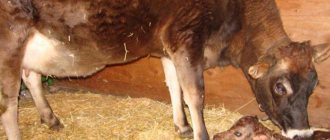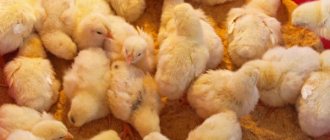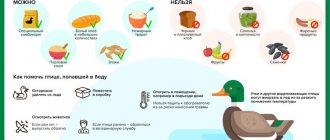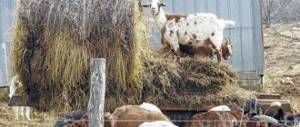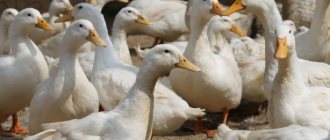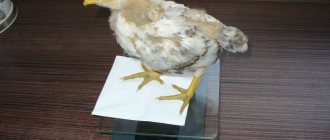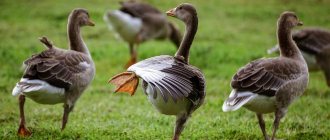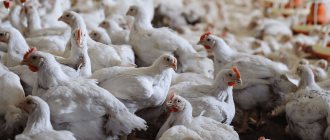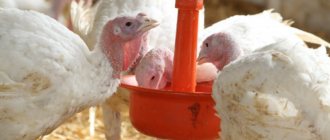Livestock » Horses
0
1473
Article rating
Kira Stoletova
A foal of any breed requires special care, since its immunity has not yet been formed and the pet is susceptible to a variety of infections. It is worth saying that the most difficult for both the owner and the foal is the first year of life. At this time, it is worth paying maximum attention to the care, feeding and supervision of the baby. Caring for a foal begins from the time it is in the womb.
Foal
Features of caring for a pregnant mare
To ensure that the foal is born on time and does not suffer from illness, you should start by caring for a pregnant horse. Pregnancy lasts about a year, which is how long a mare carries a baby. Throughout this period, the animal will need special care.
First of all, a foaling mare should receive the highest quality feed, which will take into account all her vital needs. It is also necessary to create conditions under which the animal will be protected as much as possible from stress and anxiety, because these factors can cause spontaneous abortion. Miscarriage can also occur because the horse was overfed.
Below is a list of recommendations for caring for a mare in the position:
- It is worth refusing to use low-quality feed in the diet and giving preference to first-class hay and grain. The same goes for water: you need to make sure there is enough of it, that it is clean and fresh. As for water, you should avoid cold water during pregnancy, as the animal can get sick if it drinks it.
- Feeding should be done strictly according to a schedule, preferably three meals a day. However, in the last trimester it is recommended to increase the number of meals to 5; at this time, the portions of the diet should, on the contrary, be reduced. The mare needs to be given the same amount of water.
- It is necessary to try to protect the mare from injuries, fractures and bruises; injuries to the abdomen, where the unborn foal is located, are especially dangerous.
- During pregnancy, especially in the last months, it is necessary to free the animal from work and any physical activity: this can negatively affect the condition of the foal.
- It is necessary to walk the filly more time: this will benefit the expectant mother and child.
- As for living conditions, the filly should live in a well-ventilated, warm room, where she can give birth to a foal and raise it in the future.
It is also worth saying that during childbirth it would be useful to have a veterinarian present in case something goes wrong. It is especially not recommended to adopt a foal for those who have only recently taken up animal husbandry. Although usually the mare gives birth on her own without outside help.
Caring for a pregnant mare
In order for the baby to be born healthy, the owner must properly care for the foal and mare. A horse will walk for almost a year with an unborn foal in the womb, and during this time it will require additional attention. This applies, in particular, to control the quality of drink and feed. It is also worth making sure that the mare is calm and not worried, you need to make sure there is no stress. Nothing should cause anxiety, discomfort, or even more so, frighten the horse. If the mare suffers from stress, she may miscarry.
But this is not the only thing that matters. The mare may not be timid and ignore stressful situations, but she will not be able to ignore poor nutrition. If her body does not have enough energy, this will trigger early labor to get rid of the fetus. Overfeeding can also cause a similar reaction, since obesity has an extremely negative effect on the horse’s health.
There are a number of recommendations that every owner of a mare carrying offspring should adhere to:
- Only high-quality feed should be used. Spoiled hay, moldy grain, rotten feed - all this is harmful to the mare and can cause miscarriage. To prevent this from happening, you should use high-quality grain and hay. The water should be clean and not cold. Drinking ice, as in the case of cows, can provoke undesirable consequences.
- The mare must be fed three times a day at the same time. During the last 2-3 months before the foal is born, the horse is fed more often, 4-5 times a day, but the portions should be smaller so that the animal does not begin to gain weight. You can find out when the foal will be born using a special calendar. It is easy to compose even for an inexperienced farmer.
- Any injury can become irreversible, so you need to make sure that the mare does not have bruises, wounds, dislocations or fractures. And in no case should you touch her womb, so you should carefully choose what kind of work the horse will do, and in the last month of gestation you should free the mare from any stress. But periodic walks will benefit both the baby and his mother.
- The mare must be kept in a clean and spacious enclosure without drafts or cold, but with good ventilation. The litter must be changed on time and care should be taken to ensure that it does not harbor parasites. They can affect both the horse and its foal. It should be remembered that birth usually occurs at night or in the morning.
There is one more recommendation for all owners of pregnant horses. No matter how experienced a farmer is, he needs a good veterinarian. If you have any suspicions, you should call him to examine the mare, and the presence of a doctor during childbirth will make life much easier for a novice breeder. It is also worth consulting with him in advance about what problems may arise during the birth of the baby. All this will increase the chances that the foal will be born.
The birth of a foal
Everyone eagerly awaits the very moment the foal is born. It is important that the mare gives birth normally, without complications: this will be a kind of guarantee that the baby will not have health problems. So, when this cherished day comes, although usually the birth itself occurs at night, it is worth properly preparing the stable to receive a new resident. You need to create a place for the mare with new, clean bedding on which she can give birth to her baby. Lack of bedding or drafts will harm both mother and child.
At the most crucial moment, when the foal passes through the birth canal, you need to stand in such a way that the horse does not see either the owner or any other people. The fact is that natural instinct at the moment commands the pregnant mare to retire in order to be left alone with her task.
When independently regulating the birth process, when there is no veterinarian nearby, you need to take care that after birth the foal does not remain in the amniotic sac for a long time. If the mucous membrane does not rupture on its own after contact with the floor or the mother does not lick it, the newborn must be helped immediately, otherwise there is a risk of self-suffocation.
Foal and newborn foal
As a rule, foaling (the birth of a foal) occurs in the cold season - early spring. At this time, the air is damp and cold, so the room intended for childbirth is insulated to a temperature of 6-10 degrees and drafts are eliminated. A newborn foal is immediately processed: it should be freed from the amniotic membranes, mucus should be removed from the nostrils and ears. If the umbilical cord does not break when leaving the womb, it is tied up and cut with sterile scissors at a distance of about 5 cm from the tummy. The stump of a newborn foal must be treated with iodine tincture. The foal is then wiped dry with a clean towel.
Colostrum plays a very important role in the life of a foal , it is extremely rich in protein, so the baby needs to receive colostrum from the first hour of life. About half an hour after birth, the foal will try to suckle on its mother's udder. If he doesn’t succeed right away, he will need your help to gain sucking skills. In addition, the mare may have a fiery disposition and resist when the foal tries to suckle her udder. If this happens, help the mare get used to the foal and establish contact. In exceptional cases, feeding the foal with the mother's colostrum through the nipple should occur every 1.5 hours until mother and baby find a common language. What to feed a foal if the mare does not have milk? It may well be replaced by cow's milk, but the nuances should be taken into account. Mare's colostrum contains more sugar but less fat and protein than cow's milk. Therefore, before feeding foals with cow's milk, it must be diluted with warm boiled water (by a third) and added table sugar (a tablespoon per 1 liter). Naturally, milk for feeding foals must be freshly milked. Up to two months, such foals are watered every two hours, then no more than four to five times a day. A newborn foal is very susceptible to disease. This is, first of all, constipation (original feces cannot be passed out), causing acute pain to the baby and often causing the death of the foal. For constipation, foals are given a regular enema with soapy water.
How to care for your foal after birth
After the foal has lost the amniotic sac, it is time to cut the umbilical cord, although it also happens that it breaks automatically. It is worth preparing all the necessary sterile instruments in advance. You need to take a silk thread and tightly tie it around the umbilical cord stump, forming a tail. Those who are encountering such a procedure for the first time should also study in advance how many centimeters need to be removed from the baby’s belly. Doctors usually recommend retreating about 15 cm.
You also need to ensure that the foal’s head is not covered with intrauterine mucus; special attention should be paid to the nostrils. A piece of gauze and a syringe may be needed to clean out the nasal canal. This step cannot be neglected, because sad statistics show that many deaths occurred because mucus from the head got into the horse’s respiratory tract.
If all the preparatory stages have passed without problems, the horse itself and its natural instincts do the rest. Unlike a human baby, a foal is able to stand on its own feet within two to three hours, after which a new stage of care begins - feeding the foal.
Feeding the baby
As in the case of humans, there is nothing better than breastfeeding, because no artificial formula can replace the unique composition of breast milk. If a pregnant domestic mare does not object to the foal suckling milk, the baby, along with calories, receives an irreplaceable supply of vitamins and very important substances. It is believed that the strongest and most resilient riding horses are those that have been naturally fed. It is worth saying that during the first month of life, a dairy stallion does not need any other food except milk: it currently contains all the essentials.
When an animal reaches the age of 2 months, it is worth considering that its diet needs to be enriched with other products. The first complementary food should be oats, but always crushed to flour. If you want to give the whole grain, you must first soften it - boil it, and only then give it to the baby. If you regularly adhere to the foals’ feeding schedule and introduce new foods gradually, then the baby’s weaning will go without any problems.
Another advantage of proper nutrition for babies is that weight growth in this case occurs faster. The same applies to the growth of muscle mass, which is why such horses always look attractive. Of course, a lot happens under the influence of genes and the breed of foals.
Caring for a foal in the first months
In the post-weaning period, the young horse must be provided with a sufficient amount of good-quality roughage. It is advisable to feed the future assistant 4 times a day.
During the first and second years of life, the foal must develop and firmly establish useful conditioned reflexes necessary when riding and further using the horse. During this time, the young horse gets used to putting on a halter, being led on a rein, learning to trust a person, standing calmly when trimming hooves, etc.
Remember, in order to have an efficient, calm and good-natured horse, you need to properly raise the foal, promptly and efficiently teach riding under saddle and harness, and optimally exploit the young working horse.
G.A. Khatskevich, livestock specialist and horse breeder.
Read other articles on this topic here.
When to wean a foal from its mother
How long should it take for weaning from the mother to be painless and simple? This question is asked by many novice livestock breeders. Unfortunately, there is no definite answer to this - it is worth weighing all the factors, such as belonging to a particular breed, the living conditions of the riding horses and how healthy the newborn foal is at the moment, and only after that figure out the answer. Usually a period of about 6 months is maintained, after which the foal is considered an independent adult, which moves into the weanling group (this includes animals up to one year of age). Thus, the horse is usually separated from the foal at six months of age.
Breeding foals spend a longer time with their mother, which are needed to maintain the tribe, in this case this is justified. Also, a valid reason for staying with the mother for a longer period of time is the situation when the foal has diseases or develops more slowly than this should happen, then the period of stay with the mother can double.
There are also factors that, on the contrary, accelerate the weaning of foals, including purebreds. The main reason is the mare’s illness, during which she simply cannot feed her child on her own and care for him sufficiently.
Three-year-olds and the basis of their diet
By the age of three, young working horses reach about 450 kg of live weight. A complete and balanced diet directly affects the strength qualities of foals. Due to the decrease in growth rate, you can slightly reduce the concentration of nutrients in the diet. Feeding is carried out at least 4 times a day - in portions. In the winter season, animals should receive approximately 8 kg of hay per day, 2 kg of carrots, 4.5 kg of oats, 50 grams. premix and 28 gr. regular table salt. You can give silage, cereals and legumes, as well as root vegetables (potatoes, beets). In summer, in addition to natural food, the horse can be fed with oats.
Advice! Normalized feeding compensates for the energy spent during training and performing simple work.
Feeding is an integral part of keeping an animal. The further development of the horse will depend on a properly formulated diet and balanced feed. Food is of particular importance for a pregnant mare and a foal under three years of age. During this period of life, starting from the mother’s womb, all organs, skeletal and muscular systems are formed and developed. Proper nutrition largely regulates these processes and determines the future health of foals as a whole.
How to properly separate a mother from her foal
You already know at what age it is recommended to transfer a foal to weanling groups. However, there are other recommendations that relate to taking into account other conditions, for example, the time of year. So, the best option is to wean the young animals in the spring. The fact is that this way the baby will be able to spend the winter next to his mother, who will provide him with food and warmth.
On forums dedicated to horse breeding and raising foals, you can read a lot of recommendations and stories from personal experience on the separation of young animals from their mothers. Experienced livestock breeders recommend carrying out the procedure this way:
- If there is more than one lactating mare in the herd, then they are all separated from the children at the same time.
- Riding horses with babies can be brought for feeding. While the mares are busy eating, the young animals should be quietly removed from the tail so that the mares do not see it.
- You should try to keep weaned foals together in the same herd both in the pasture and in the stable.
Keeping foals
Special, careful care for foals is required in the first week of life until they get stronger. A newborn foal looks very awkward: it has a narrow, shallow, short body and incredibly long legs. If all conditions are provided, the growth of foals will be very active. On average, a horse gains about one and a half kilograms of weight per day (during the suckling period), and by six months their weight will reach half the weight of an adult horse. However, if the foal is not properly cared for, it will remain skinny and awkward. So, after the first week, in normal weather, the foal and mare can already go out for a walk, and later - to the pasture.
Keeping foals involves grazing them with their mother on pasture on fine days. Herbage promotes the normal development of the horse’s gastrointestinal tract, as well as the body as a whole. The foal should not be allowed to lie down on the cold ground. The horse feeds the foal quite often - it can feed the udder twenty or more times a day. Therefore, it is not worth separating the mare from the child. From 30-45 days, milk can no longer provide all the needs of the growing body, and additional feed must be introduced into the foal’s diet. Initially, feeding foals can be supplemented with 100-200 grams of bran, rolled grain, meal, sunflower cake, and flaxseed decoctions. The amount of feed for the weaning period is increased to two to three kilograms. The period of weaning a foal from its mother is approximately 6-8 months. To make weaning painless, you need to teach the foal to eat concentrated and roughage feed. Feeding foals should be done with high-quality feed, but without any special preparation. Chaff and straw can be steamed and flavored with a sprinkle of concentrated feed. Grain for foals, as mentioned, should be flattened, because the teeth of the “babies” are still weak. But there is no need to overdo it: it is better to give preference to crushed corn, wheat, and peas over finely ground ones. The fact is that in the foal’s stomach, flour can form a “dough”, which will cause digestive problems, and the foal will receive little benefit from such food. Adequate maintenance of foals involves feeding meadow hay, carrots, potatoes, silage, and beets. Young horses are fed 3-4 times a day. Foals need to be watered before each feeding with concentrated feed and after each feeding of foals with roughage.
Maintenance of foals: diet
And from this table you can find out what to feed foals, in what quantity, at what age and for what breeds of horses (the diet is approximate).
| Type of feed | Riding and trotting horse breeds | Draft horse breeds | ||||
| After weaning | From one and a half to two years | Two to three years | After weaning | From one and a half to two years | Two to three years | |
| Legume hay | 2 kg | 3 kg | 2 kg | 10 kg | 8 kg | 4 kg |
| Meadow hay | 2 kg | 2 kg | 8 kg | 4 kg | — | 4 kg |
| Bran | 500 grams | 1 kg | — | — | 1 kg | — |
| Oats | 3kg | 3 kg | 3 kg | 4 kg | 4 kg | 3 kg |
| Beet | — | — | — | 2 kg | 3 kg | 4 kg |
| Carrot | 1 kg | 2 kg | 2 kg | — | — | — |
| Corn | — | — | — | — | 3 kg | — |
| Oat straw | — | — | — | 2 kg | 3 kg | 4 kg |
| Salt | 30 grams | 30 grams | 30 grams | 30 grams | 30 grams | 30 grams |
Tatyana Kuzmenko, member of the editorial board of the online publication “AtmAgro. Agroindustrial Bulletin"
How to properly care for foals after weaning from the mare
While the foals were close to their mother, they received food on demand, that is, there was no clear schedule for eating. This is explained by the physiological structure of the digestive tract of babies, because their stomach has a small volume and simply cannot accommodate a lot of food. If you immediately start feeding a foal in the same way as an adult riding horse, there is a possibility that unpleasant gastrointestinal symptoms will appear: diarrhea (diarrhea), colic and constipation. Moreover, in some particularly advanced cases, the foal’s health deteriorates so much that it cannot even stand on its feet.
In order not to provoke the development of such dangerous complications, you need to approach the issue of feeding your baby responsibly from the very beginning. Feeding should begin with minimal portions, allowing the foal's fragile digestive system to completely digest and assimilate the food. At first, you need to feed the animal with fresh hay, chopped oats, carrots and a small proportion of bran.
However, it is not only the issue of feeding that interests owners of foals. It is also worth talking about the importance of physical activity for young animals. Just like adults, foals need to expend their energy and strength. Regular grazing in the fresh air is ideal for this, during which the baby can move freely, jump and gallop, and also communicate with his relatives.
A healthy foal will never stand still with his head down. This is necessarily a cheerful animal that cannot stand in one place for a minute, but constantly goes somewhere, explores something and shows curiosity.
For the safety of the baby, you need to make sure that there are no potholes or depressions in the pasture that an inexperienced animal could get its foot caught on. By the way, leg injuries in young horses are not uncommon.
Maintenance and feeding of foals
| Weaning from its mother is a turning point in the life of a foal, the beginning of its transition to an exclusively plant-based diet. The best pastures are allocated for weanlings, and during the stall period they are given good-quality cereal and legume hay and grass meal. The best hay for foals is considered to be hay made from clover and small-stemmed cereals; alfalfa is less valuable. Concentrates in the diets of young animals include oats (1/3 of it is recommended to be fed rolled), wheat bran and a small amount of flax or sunflower cake. It is beneficial to include a small amount of molasses, sprouted oats and red carrots in the foals' diet. | feeding foals |
Lick salt is often used as a mineral supplement (put in feeders). If there is a lack of calcium in the diet, foals are given chalk - 20-30 g per head per day (mixed with bran).
Weanlings should be fed at least 4 times a day: concentrates are given in the morning, noon and evening; hay - at each feeding, and succulent food - in 1-2 doses. When feeding concentrates, foals are tied to feeders so that the stronger ones do not push the weaker ones aside. While the foals get used to each other (usually 4-5 days), they are monitored. After this, they begin to be released into pastures or for walks (foals separately from fillies). When raising young animals, their gender is taken into account. Stallions are more demanding of feeding and housing conditions than fillies, and respond much better to adequate feeding and good maintenance. Therefore, the feeding norms for foals should be slightly higher than the feeding norms for fillies. Differentiated feeding of foals and fillies is especially important when raising them for breeding. The difference in feeding level persists until 2 years of age. With the onset of intensive training, differences in the level of development between foals and fillies are smoothed out, and the same feeding rate is established for them. From October to December, per 100 kg of live weight, feed costs are 2.8 feed. units for stallions, 2.5 feed. units - for fillies, and from January - 2.5 and 2.3 feed, respectively. units At the same time, per 1 feed. units there should be from 105 to 115 g of digestible protein, 6.5-7.5 g of calcium, 5.5-6 g of phosphorus and about 20 mg of carotene. At first, the diet of weanlings should consist of 50-60% (in total nutritional value) from concentrates; As foals age, the proportion of roughage in the diet increases. In summer, during daylight hours, they are kept on long-term artificial or good natural pastures. Foals are driven into the stable only at night or during the hottest part of the day. Free, relaxed movements in the fresh air have a beneficial effect on the development of foals and the strengthening of their cardiovascular system, tendon-ligament apparatus, muscles, bones, and contribute to the comprehensive development of the body and the promotion of health. It should be borne in mind that if there are no good pastures on farms, it is impossible to raise a good horse. It is necessary to create cultivated pastures (levadas) on farms. The advantage of the latter over natural pastures is their higher yield, uniform distribution of green mass over the months and the ability to regulate the composition of the grass stand in relation to the characteristics of young horses. The creation of cultivated pastures makes it possible to increase the productivity of pastures by 4-6 times.
To improve health, especially the tendon-ligament system of the limbs, in warm weather it is recommended to bathe young animals in a shallow flowing pond with a solid bottom. It is necessary to monitor the cleanliness of his skin and the condition of his legs: the hooves are trimmed, trimmed and leveled at least once every 1-2 months.
Non-breeding stallions intended for transfer to working stock or for slaughter for meat are castrated in the spring (before the onset of heat and the appearance of insects) at the age of 2 years. In the first days after castration, foals are provided with good feeding and housing conditions and are monitored
Raising a foal
The first thing you need to worry about when it comes to caring for a foal is, of course, health. But this fact does not mean that raising an animal is fading into the background. It is recommended to begin direct training of foals no earlier than when they reach one and a half years of age. It is believed that by this time the young horse has gained strength and is ready for a certain kind of stress. Normal exercise and training depend on the purpose for which the foal is raised and what breed it belongs to. For example, draft horses are trained through group lessons, while representatives of purebred breeding horses are given special attention - individual training is provided for them.
No matter how strange it may sound, you need to choose a suitable nickname for the foal. Usually, when choosing a name, the pet’s character and appearance are taken into account, and attention is paid to its distinctive features and characteristics. For example, a piebald horse can be named Pegasus, and an animal with golden hair can be named Golden, and an animal with a long tail can be called Braggart. As for the sound, you should choose a name for your horse that is easy to pronounce; it usually consists of a maximum of 2 syllables.
What should classes be focused on? When training purebred breeding animals, attention is primarily paid to teaching proper running and walking. Usually they start with jogging. If we are talking about draft horses, then you need to work on other skills: endurance and the ability to carry heavy loads on their legs. Also, in parallel with physical activity, the horse is accustomed to noise, sharp sounds and other external stimuli that can frighten it.
Typical diseases of foals
There are a huge number of horse diseases, but not all of them can affect young animals. How can you tell if something is wrong with your foal? You can determine whether a foal is healthy or not by external signs. If the animal begins to eat poorly or refuses food altogether, if its weight begins to noticeably decrease or its growth stops, if its gait becomes shaky and uncertain, this indicates that the foal is not healthy. It is recommended not to self-medicate; it is better to seek help from a veterinarian without delay.
Despite this, you should stock a first aid kit to provide first aid to your animal. Typically it includes the following:
- sterile gloves;
- syringe (enema);
- syringes;
- cotton wool and bandages;
- hydrogen peroxide;
- tourniquet to stop bleeding;
- local antibacterial agents;
- cooling gel for joints and muscles;
- antipyretics;
- drugs to stop bleeding.
It is worth saying that its cost can range from 5 to 15 thousand rubles.
The most common ailment in foals is considered to be joint pain, or pyaemia with streptococcus infection. It occurs at the stage when the umbilical cord is cut in a newborn foal. The reason for the infection to enter the animal’s body is unsanitary conditions in the stable and the use of unsterile equipment. The danger of the disease lies in the fact that the fragile body is not yet able to resist the infection, so it spreads with lightning speed. As a result, both internal organs and bones can be affected, which is why the animal is culled.
Feeding foals
Raising a healthy and strong horse from a foal is a serious and responsible task. The first year of a foal’s life is the most important, because it is during this period that the backbone and muscle corset are formed, and the necessary resources are laid for the horse’s further use in sports and other physical activities.
A fundamental role in raising a young horse is played by proper nutrition and a well-chosen diet. It is best to ensure the correct development of the foal while still in the womb by including all the necessary nutrients in her diet. But if this is not possible, and you purchased the foal after it was weaned from its mother, do not despair. Today there is a huge selection of various healthy feeds and supplements.
From birth to 6 months, the foal feeds on its mother's milk, receiving from it everything that the growing body needs. During this period, make sure that the mare receives only high-quality and nutritious feed, because the quality of the milk depends on this.
When the foal is six months old, it is gradually weaned off its mother's milk and moved to a separate stall. From this moment on, all responsibility for the proper feeding and raising of the foal falls on your shoulders.
To create a balanced diet, it is necessary to use the highest quality feed: first of all, good nutritious hay. It is the basis of any diet, which means it should not be dusty or moldy. The best hay is considered to be harvested in June, when the grass is most nutritious and contains the maximum amount of vitamins.
Previously, reptiles or wall-mounted nurseries were used to feed hay, but now special “slow” feeders are gaining great popularity, which ensure uniform and leisurely eating of hay, which is more beneficial for the horses’ digestion. Another option for feeding hay is to distribute it on the floor. In this case, dust and other small particles that can cause allergies or breathing problems do not enter the horse's nasopharynx.
In addition, in nature, horses graze with their heads down.
In addition to roughage (hay), it is necessary to introduce concentrates into the diet, such as oats or special muesli for foals. Muesli is a little more expensive than regular oats, but it contains a balanced amount of nutrients and microelements.
At any time of the year, it is advisable to add grass to the diet of foals: in the summer, it is necessary to provide access to pasture, and in the autumn-winter season, stock up on vitamin-grass meal.
Vegetables, such as carrots or apples, should be present in the foal's diet year-round. They can be used as treats and rewards, or added to granola and oats.
A large number of useful minerals and trace elements are contained in special pressed salt, which should also be constantly available.
During active growth, a particularly heavy load is placed on the foal’s musculoskeletal system, so the owner’s task is to help avoid developmental defects with the help of special feedings. There are many different options for supplements to help prevent joint, ligament, and bone disease.
Being the owner of a foal is a great joy and a great responsibility. The main task of a person is to make every effort to raise a healthy, physically developed horse. This is a rather expensive process, but you should not skimp on the foal’s health. It is important to remember that this will become a kind of foundation for the long life of the horse.
